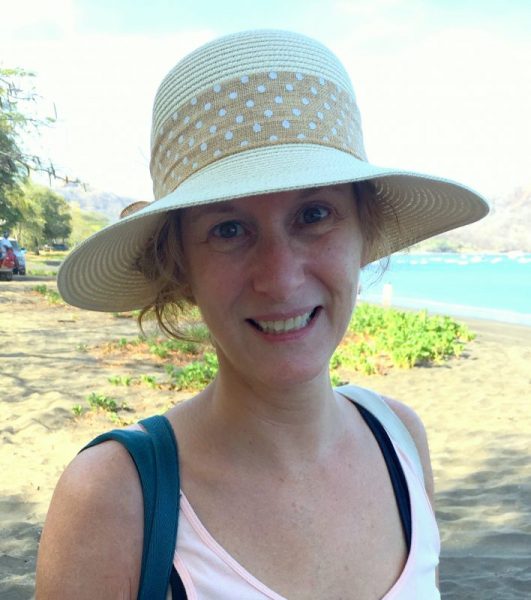County Health Department Urges Putnam Valley Residents to Test Their Water
News Based on facts, either observed and verified directly by the reporter, or reported and verified from knowledgeable sources.
 Putnam County health officials last week advised Putnam Valley residents who use private wells for their houses’ drinking water to test their water sources to ensure their supply is safe.
Putnam County health officials last week advised Putnam Valley residents who use private wells for their houses’ drinking water to test their water sources to ensure their supply is safe.
Crowded into Putnam Valley Town Hall last Wednesday were more than 30 residents anxious to hear Putnam County Department of Health officials speak about contaminants When county Environmental Health Director Shawn Rogan asked how many attendees owned private wells, a majority of hands went up.
Rogan said the Department of Health has jurisdiction over public water supplies that bring water to the school district and Floradan Estates, but not for privately-owned wells.
“For many of the contaminants that you are interested in there are not regulations that directly apply to individual wells,” said Rogan. “However, we use the standards for public water supply as a guide.”
“Every day we are learning about new contaminants that come down along the regulatory chain and it’s really overwhelming to be honest,” Rogan added. “There is so much we are dealing with on a daily basis.”
The issue of safe, local drinking water from public and privately owned became widely known in January when the Putnam Valley School District filed a lawsuit against major chemical companies for allegedly contaminating the elementary school’s drinking water. More recently contaminants such as perfluoroalkyl substances (PFAS) were found in the nearby Floradan Estates’ residential drinking water.
Vincent Perrin, public health sanitarian for Putnam County, specifically addressed PFAS, an issue that’s been in headlines nationwide.
Perrin encouraged residents to use the county Department of Health as a resource, especially when testing their drinking water, and if needed, when purchasing filters for their wells.
“If you do decide to test the water from your wells and bring that water to a lab to get it analyzed or have a contractor take a look at it and you want a second set of eyes to run past it, contact us,” Perrin said. “We’re here to help you guys out.”
Results of water tests or questions about water filters can be e-mailed to the county Department of Health for staff to review.
“I will go over line by line with you,” Perrin said. “That way you know it’s not just somebody trying to sell you a treatment system and you’ll know what the real numbers mean.”
According to the state Department of Health, testing costs for PFAS or other contaminants can range from $300 to $600.
Perrin said that while PFAS has been studied extensively during the past decade, it’s been around for more than 50 years. It is often found in commonly-used products around the house.
He pointed out how in 2016, federal Environmental Protection Agency (EPA) guidelines allowed the maximum contaminant levels (MCL) for PFAS at 70 parts per trillion. By July 2020, New York changed the testing standard for PFAS in drinking water to an MCL of 10 parts per trillion, among the lowest in the United States.
Other common and dangerous contaminants are more likely to be in private wells. Laura Chapman, a county Department of Health public health sanitarian trainee, spoke about current health codes, different types of wells and which wells are more likely to be contaminated.
“We recommend people test for bacteria, nitrates, lead and sodium chloride from runoff,” said Chapman, who pointed out that serious health issues caused by certain contaminants, especially bacteria, put youngsters and those who are immunocompromised at greater risk of disease.
Anthony Fricchione, the county’s assistant public health engineer, said various filtration systems are available to install that can filter various contaminants including PFAS.
“There are water filtration systems that use granulated activated carbon (GAC, or charcoal filters) and reverse osmosis (RO) filters. They are the most effective in removing PFAS contaminants from drinking water,” he said.
Fricchione recommended checking the ratings of filter systems on the National Sanitation Foundation website at www.NSF.org.
According to Angi and HomeAdvisor, a home water filtration system costs $1,000 to $4,000, with a national average of $2,078. Water filtration system maintenance costs range from $50 to $300 per year.
Two weeks before the Mar. 8 meeting, Putnam Valley residents were invited to submit questions to town Supervisor Jacqueline Annabi who sent them to the Department of Health. Annabi received 16 questions, which were reviewed by the department’s staff.
Shanna Siegel, the Department of Health’s supervising public health educator and public information officer, said the questions fell into one of two categories: regulations and responsibility and exposure.
“Each question was incorporated into the information provided by the subject matter experts,” Siegel wrote in an e-mail. “The intent of the evening was to ensure residents have access to information that can help them stay healthy and safe, particularly when it comes to drinking water. The topics and speakers were shared with the town prior to the meeting.”
For more information regarding well tests and results, residents can call 845-808-1390 or e-mail putnamhealth@putnamcountyny.gov.

Abby is a seasoned journalist who has been covering news and feature stories in the region for decades. Since The Examiner’s launch in 2007, she has reported extensively on a broad range of community issues. Read more from Abby’s editor-author bio here. Read Abbys’s archived work here: https://www.theexaminernews.com/author/ab-lub2019/
